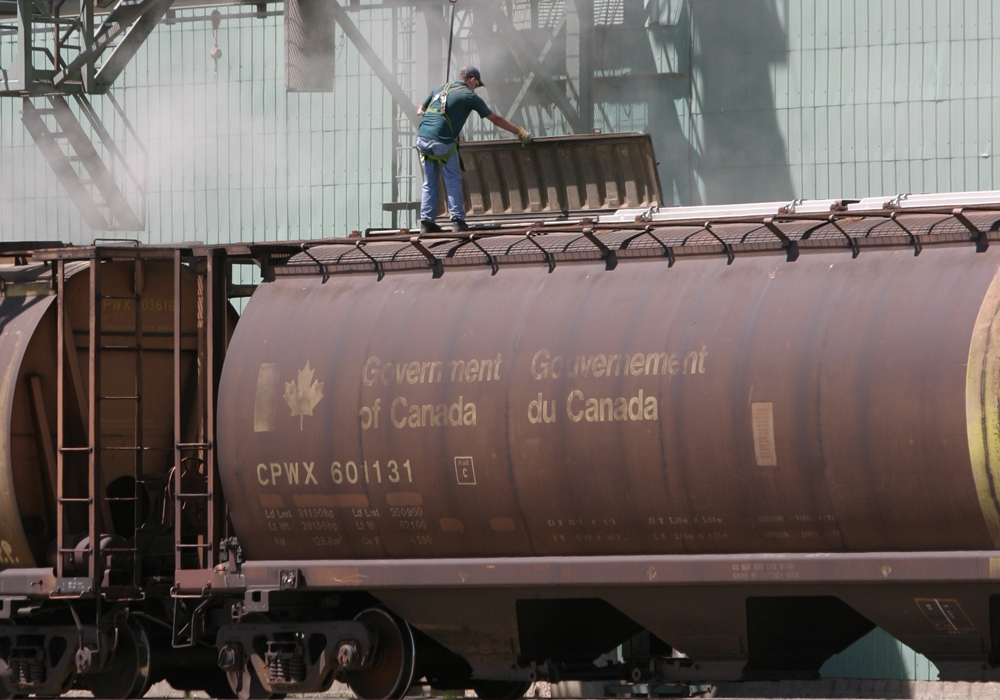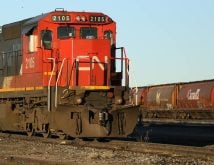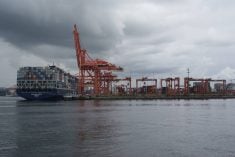Slow harvest progress in Western Canada is delaying the movement of grain to prairie elevators and export terminals on the West Coast and at Thunder Bay.
John Brooks, executive vice-president with Canadian Pacific Railway, told investors in Montreal that the western Canadian harvest is as much as 30 percent behind normal this year.
Poor harvest weather and late maturing crops have affected CP’s grain volumes in September and will put pressure on the railway to move more grain later in the shipping year, he said.
Read Also

Soybean market still figuring out implications of China-U.S. pact
Soybean futures had a muted reaction to the U.S. trade deal with China as the market tries to figure out the nuances of the deal.
In the first three weeks of September, CP had shipped about 1,000 fewer car loads per week than normal.
“The harvest, on average, in really all three provinces on the Prairies, is anywhere from … 20 to 30 percent behind where they should be or where we would expect them to be at this time of year,” Brooks said Sept. 25 at the CIBC Institutional Investors Conference.
“We would have expected the harvest to kind of charge that elevator system by now, but it just hasn’t. It’s simply because … the wet weather, and a little bit cooler weather, has kept the farmers and producers out of the fields.”
Brooks described the delay as a timing issue, adding that larger-than-normal grain volumes are expected later in the shipping year.
Grain companies that book rail cars are “sold out in December in terms of capacity through Vancouver and Thunder Bay.”
“The crop size is big — it’s going to be 70 million metric tonnes plus — and you’ve got a fair carry-in from last crop year,” Brooks said.
“All this does is kind of increase the pressure and condense the peak season, but it also probably prolongs and provides us a little bit of opportunity in the tail end of 2020 … because that grain will just get pushed back a bit.”
At Canadian National Railway, executive vice-president Ghislain Houle offered a similar view, suggesting CN’s grain movements for the last half of the 2019 calendar year might be lower than expected.
However, that will likely translate into larger than normal grain volumes in early 2020 until the beginning of the 2020-21 crop year.
Canada’s major railway companies moved record amounts of Canadian grain in early 2019, but commercial movements have been slow since July 31.
At CP, U.S. grain volumes have also been sluggish, particularly movement of American soybeans shipped to China through the Pacific Northwest.
CP typically expects to ship 60 to 70 trains of U.S. soybeans per month through the Pacific Northwest during periods of peak demand.
This year, due to trade disputes between the United States and China, peak monthly volumes have fallen to 15 to 30 trains per month.
“That is an area that has no doubt been impacted, but just like in Canada, only so much of that grain can be held,” Brooks said.
Canada’s railways are watching closely for signals that the North American economy is slowing and say they are adjusting operations in anticipation of slower demand.
Houle said CN is aggressively reducing its inventories of leased rail cars and less-efficient leased locomotives.
Contact brian.cross@producer.com
















